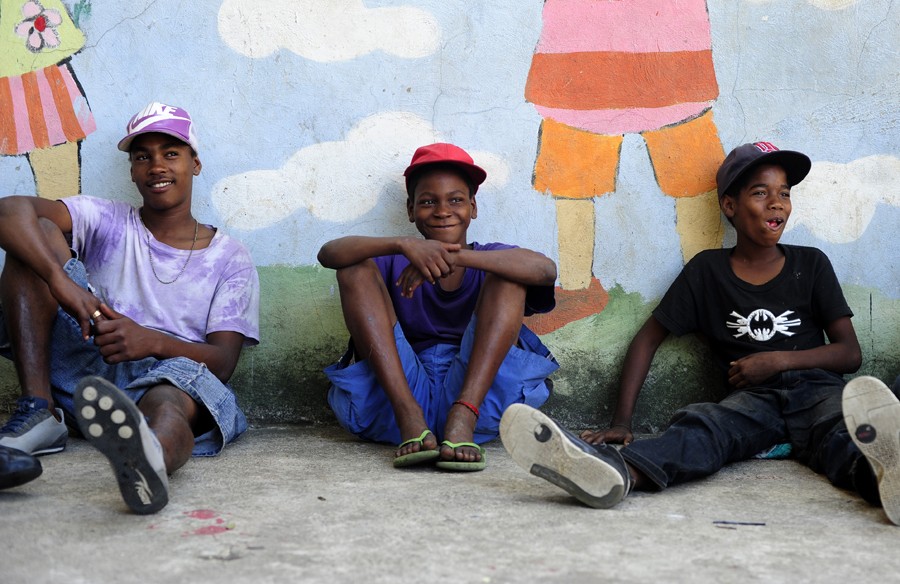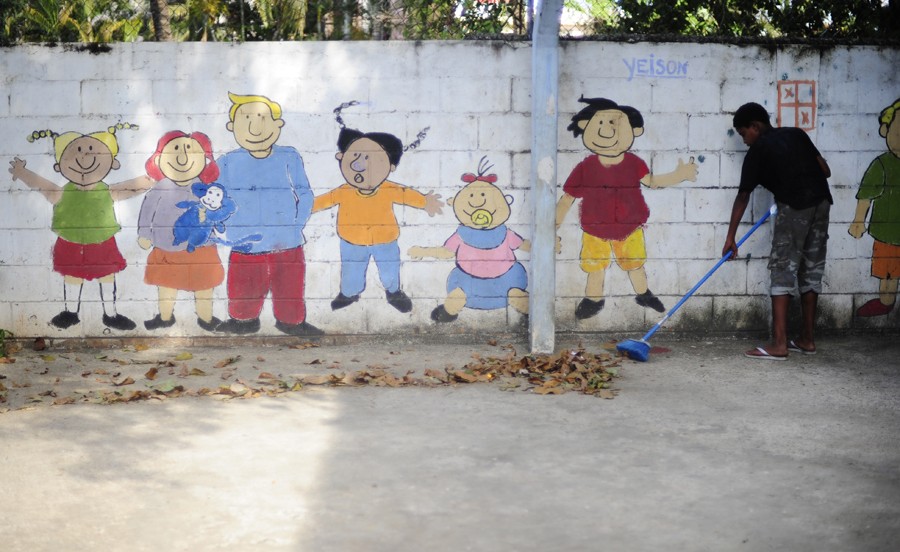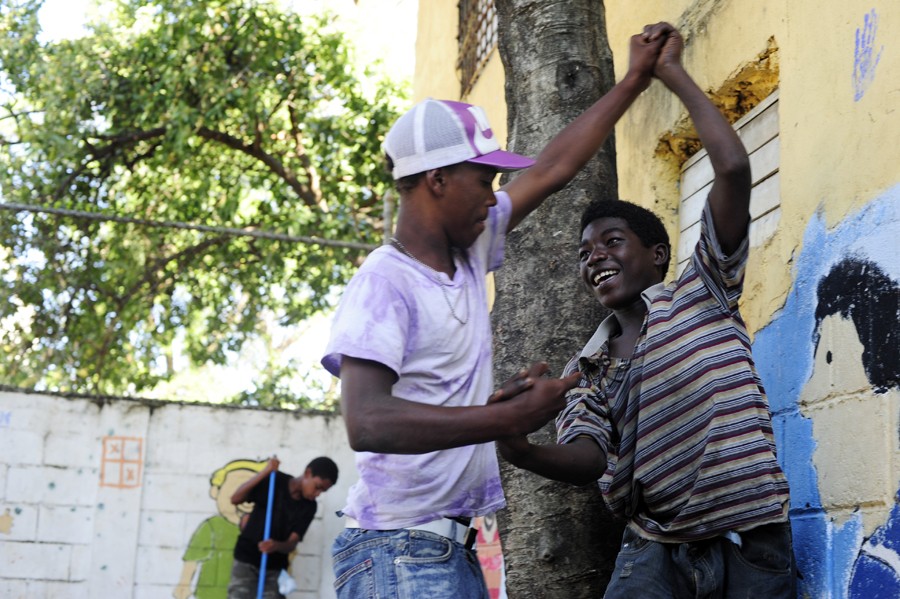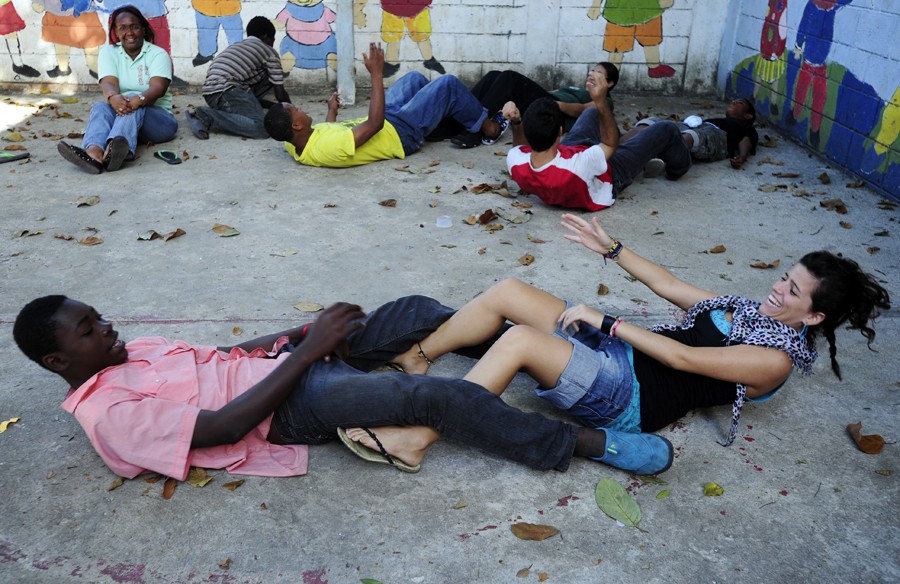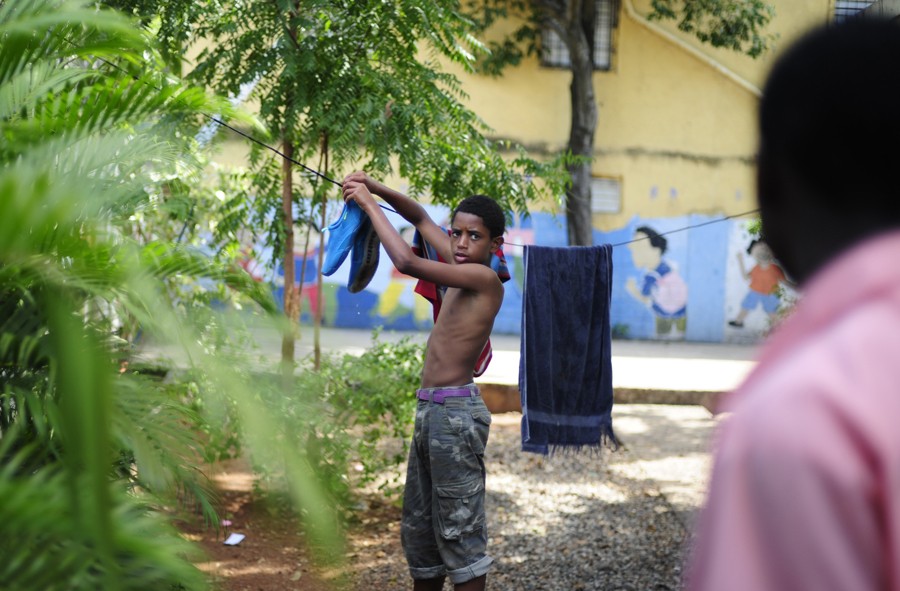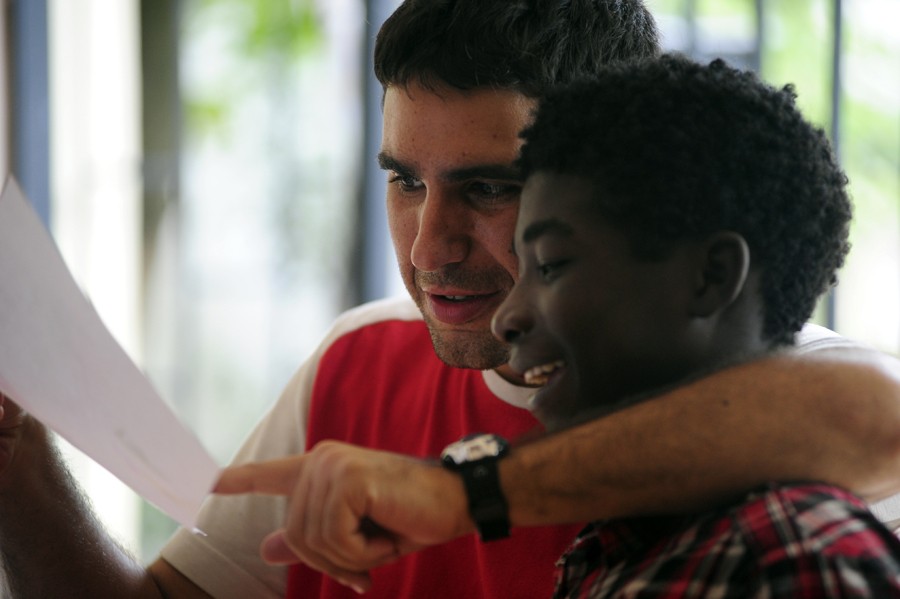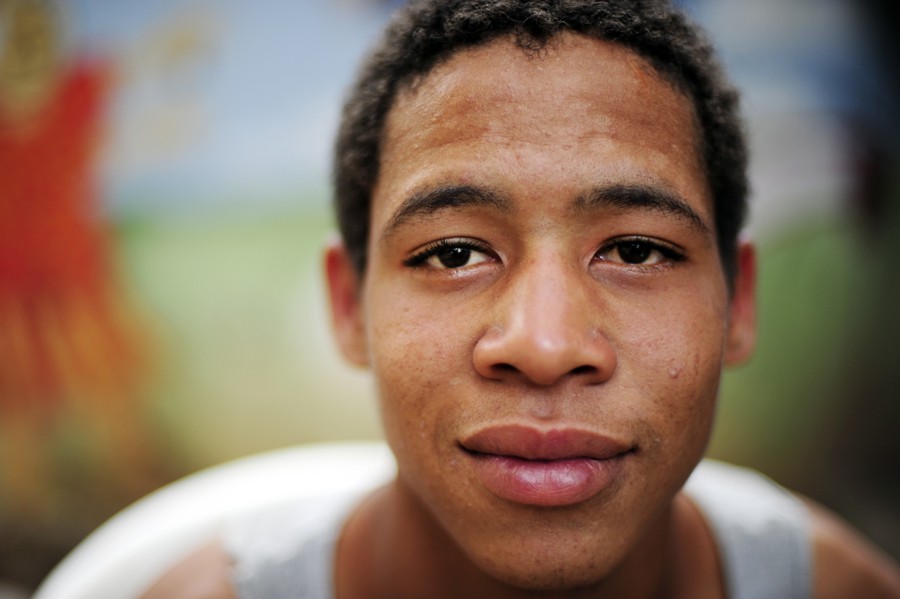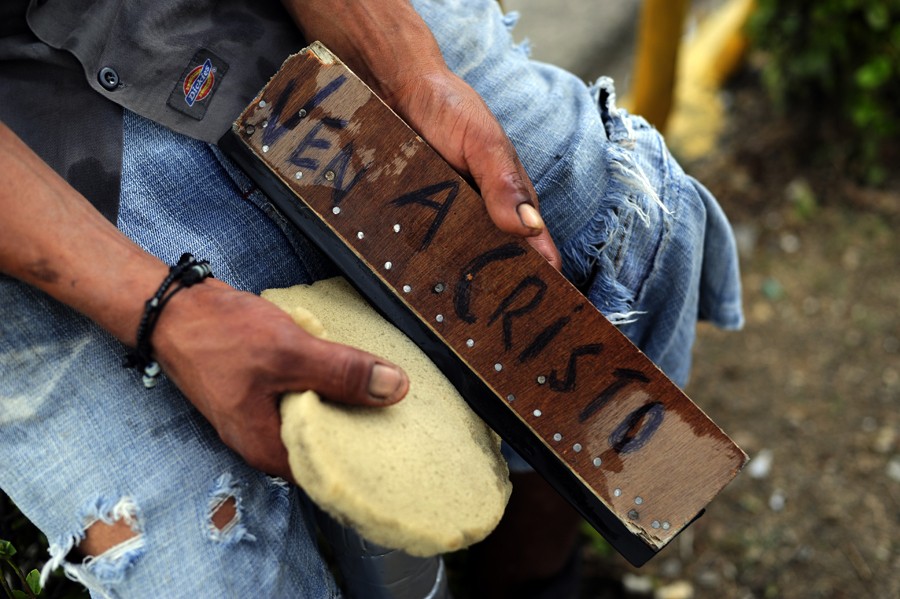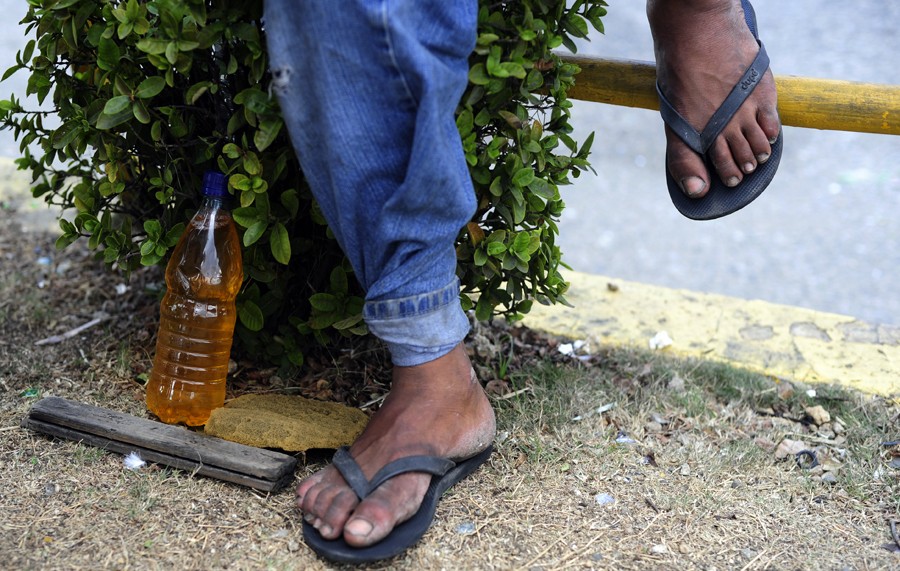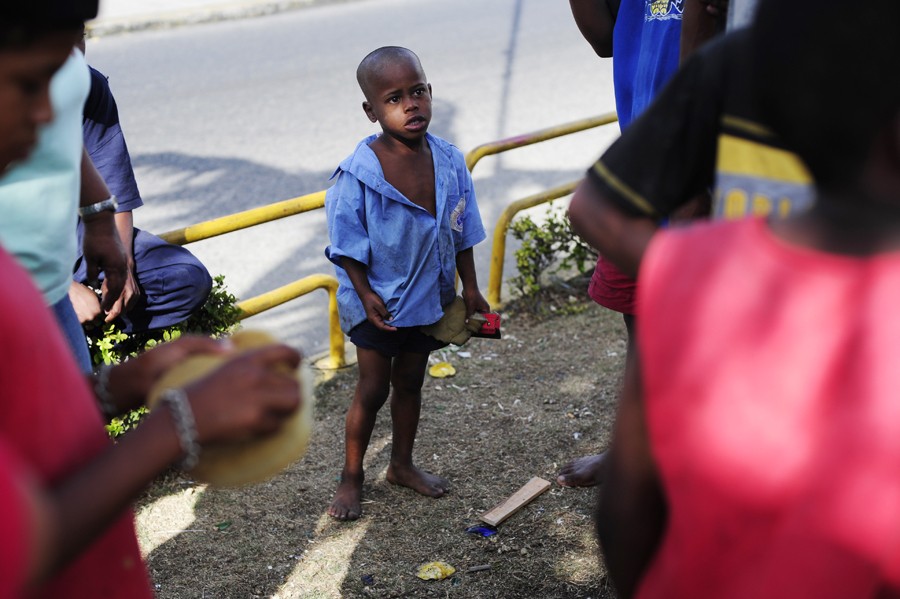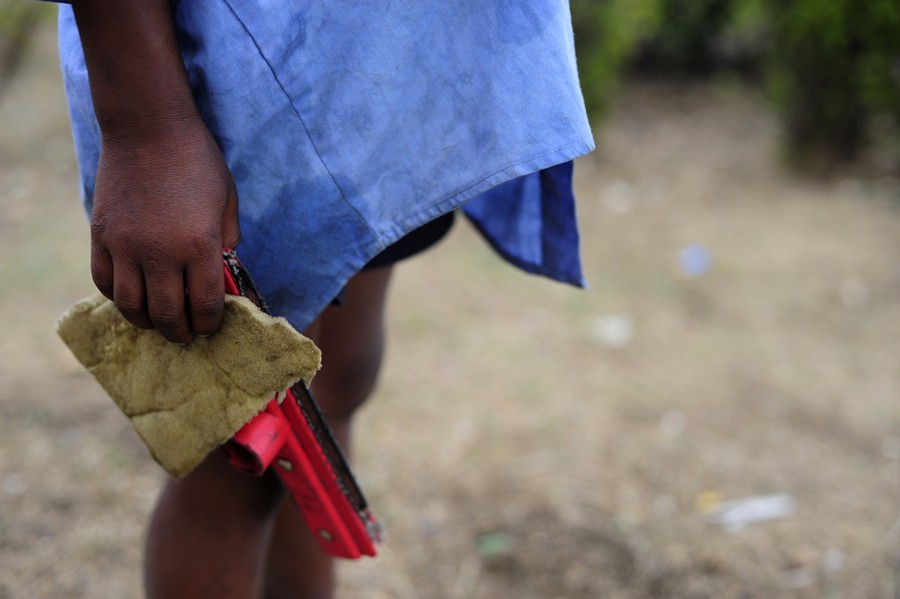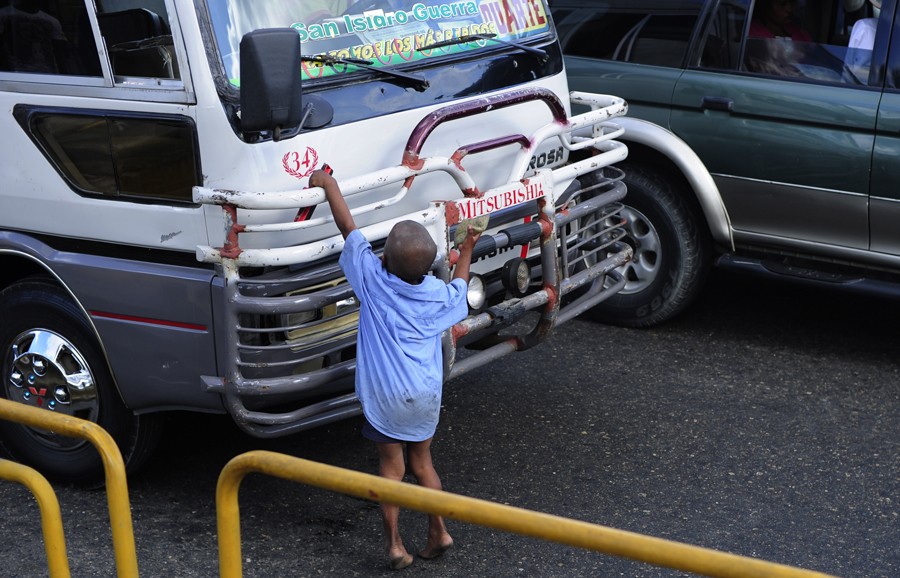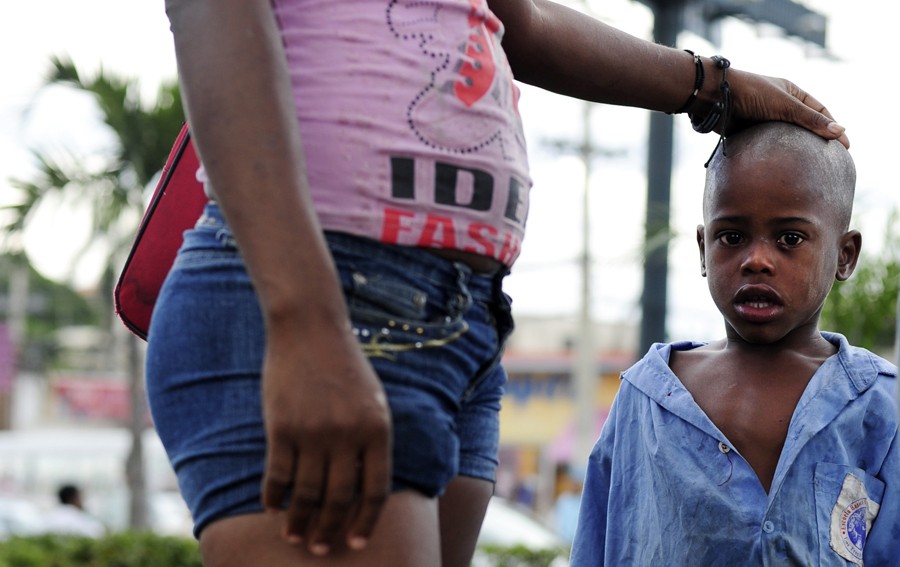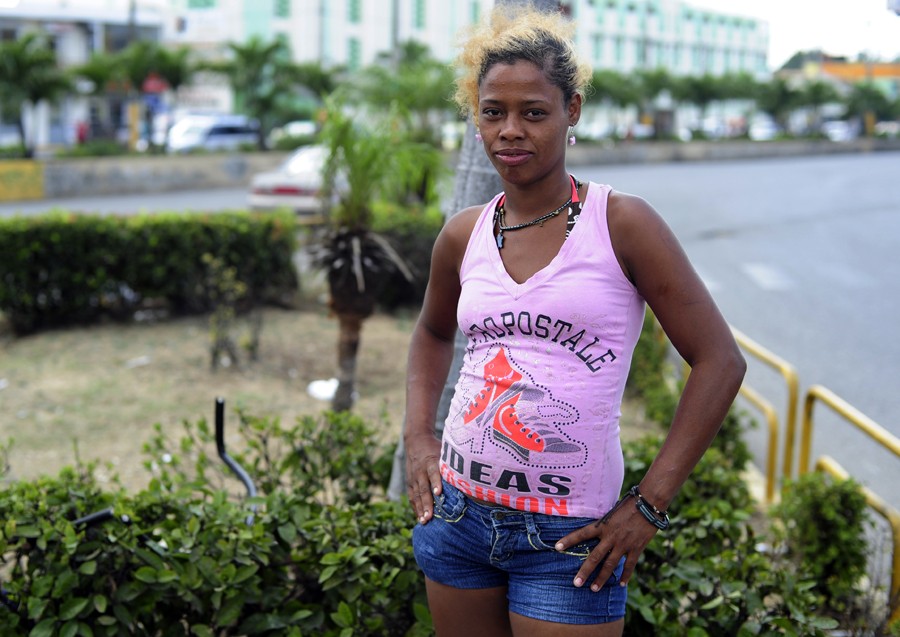Children Struggle to Survive on Santo Domingo Streets
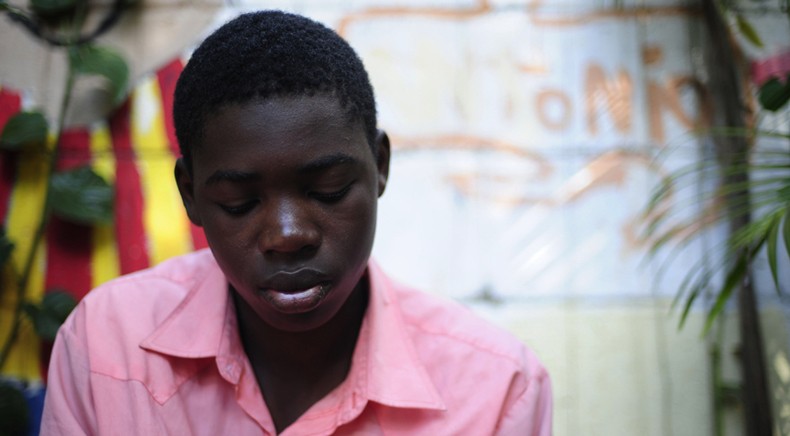
BY BASTIEN INZAURRALDE AND BRANDON QUESTER
Cronkite Borderlands Initiative
SANTO DOMINGO, Dominican Republic ― Tono Chelestine slumps onto a wooden bench, a small, white plastic bag containing everything he owns dangling from his hand.
He says nothing as two counselors at a shelter for street children talk to him, gently telling him it’s time to leave.
“Now everyone leaves, and you, Tono, I don’t know what you’re going to do,” said Natividad “Ana” Sosa, one of the counselors. “What are you going to do?”
The shelter, Niños Del Camino, an aging yellow house surrounded by an iron fence, closes at 2 p.m. It is now nearing 3, and all the other children have left, threatening to beat Tono with a broomstick on their way out.
 SLIDESHOW: Children come to shelters like this one in Santo Domingo to escape the dangers of living on the streets, if only for a short time. |
“If you choose to live in the streets, you also have to choose to be able to defend yourself, unfortunately,” Sosa tells the boy.
Tono, who is 14, doesn’t want to leave. He is frightened by what faces him beyond the iron fence. The shelter is in Ensanche Luperón – one of the most dangerous areas of the Dominican Republic’s capital.
Tono has lived on the streets for only a couple of weeks. He has much to learn.
He is one of hundreds of children who roam the streets of Santo Domingo, a city of 2.1 million. Some are Dominican and some Haitian. Many are both. Most, like Tono, were born here, but few know how to legally prove their citizenship.
While the rest of Dominican society debates the rights of immigrants, something more matters to these kids than where their parents were born or whether they have a birth certificate. Their struggle is surviving the day at hand.
They live lives largely ignored by Dominican society, on the margins, with no real homes and little access to education or other government services.
“The population sees them as delinquents. They only see it as a kids’ problem,” Sosa said. “They don’t see it as a state problem.”
The Palomos
The streets are a violent place. The street children encounter beatings, robberies, drugs and sexual abuse. They earn what money they can, washing car windshields in the middle of busy streets, shining shoes, begging.
Informally, they are called “palomos,” a Spanish word derived from “dove.” On the streets, it means rascals. Others simply call them “niños de la calle,” or children of the street.
Palomos have no legal recognition. Public authorities don’t attempt to count them, and there are few public services available to them, although the government did create the National Council for Children and Adolescents, or CONANI, in 2003. The council’s top official is Kirsys Fernández de Valenzuela, the sister of the Dominican Republic’s president, Leonel Fernández.
The council operates 58 centers nationwide, providing assistance to more than 18,000 children up to the age of 6, according to an email from Lourdes Rodriguez, CONANI’s director of communications.
The council also offers some financial and other support to five non-profits that help the nation’s street kids, said CONANI Public Policies Manager Alberto Padilla.
But those programs “have lots of financial weaknesses” and don’t coordinate very well, Padilla said in a phone interview.
“A kid sleeps at a shelter and eats at another,” he said.
Tono stayed at such a shelter after his father kicked him out of the house after Tono was caught breaking into a barbershop with a group of other teens. Tono said he was forced to participate in the break-in.
When Tono’s father came to the police station, he told Tono that he was no longer welcome at home.
“People at the CONANI were talking to my Dad on my behalf to see whether he would give me another chance, so that he would forgive me,” Tono said in Spanish. “He didn’t want to.”
At the shelter, Tono got into trouble again. He was asked to leave after getting into a fistfight with another child. So he now lives on the streets, going to Niños Del Camino three days a week from 8 a.m. to 2 p.m. He’s careful to be on time: No one is admitted after 9 a.m.
Breakfast is at 10 a.m. and lunch is served at 1.
A Different Set of Rules
In addition to feeding the children, the shelter, supported largely by donations, teaches basic literacy, offers drug counseling and tries to introduce the palomos to a set of social rules far different from those that govern the streets.
While at the shelter, the children are expected to show respect for adults and each other. They are asked to check their belongings – and their attitudes – at the door. In exchange, they get a safe place to regroup and escape the streets, if just for a while.
Abel Ortega, a Spanish teacher in Madrid who took a year off to work for the shelter, described his job this way: “Be tough if you have to be tough; get nervous if you have to get nervous; yell if you have to yell at one of them. But at the same time give them a lot of affection because a lot of times it’s part of what they need.”
Despite the counselor’s best efforts, fights sometimes break out, as occurred on a day in mid-March when Tono took exception to something another boy said to him and made a threatening gesture. The other boy picked up a five-gallon plastic water bucket and threw it at Tono, barely missing his head.
“The truth is that (getting) them to understand the norms, it is a bit complex,” Ortega said. “It’s obviously very difficult because these are children whose aggressiveness is skin deep.”
Nineteen-year-old Yeison Baís has lived in the streets since he was 5 and comes to the shelter every week. Baís said he spent two years in prison after a shootout with police following a robbery, and he prides himself on being tough. But even he needs a break.
The shelter is a place where he can “think a little, analyze, chill for a while,” he said. “Because you can never chill in the street. There’s always someone that shows up to mess around with you.”
Street School
Poverty is what drives most children to the streets.
 SLIDESHOW: Children as young as 6 wash car windows on the streets of Santo Domingo. |
More than a quarter – 27.6 percent – of Santo Domingo families lives in poverty, according to a 2009 Dominican National Office of Statistics report.
A report issued by Niños Del Camino that same year said that all of the children who came to the shelter were from a “very low socioeconomic level” and 77 percent had experienced some form of domestic violence before leaving their homes.
“The majority (of street kids) come from families where their most basic needs are not covered,” the report states.
Some children turn to the streets to help support their families, returning home at night. Others never go back.
Sixteen-year-old Manuel Antonio Santos has lived on the streets since he was 7. He occasionally visits his family in Los Guandules, a neighborhood that he describes as an “aggressive place.”
“I have my family at my house,” Manuel said in Spanish. “They give me everything so that I don’t stay in the street, but I leave because I don’t like it there.”
He has formed a new family on the streets – 13-year-old Eduard Arias and 18-year-old Jonathan Encarnación.
“I live in the street with my ‘brother’ Eduard, the small one,” Manuel said. “He’s my brother. In the street I have to protect him and get money, see?”
Agustin Mora, the director of Niños Del Camino, said that kind of solidarity is very important for street kids. “They see themselves as a family,” he said.
Tono has yet to find a street family. At the shelter and on the streets, he keeps mostly to himself, and he’s often taunted and abused by other children, most of whom have lived on the streets of Santo Domingo for years.
To survive, he will need to make alliances and learn the street code from more experienced children.
“It’s like a school,” Mora said.
But this school can be a violent one. Tono said a man attempted to rape him a few days after he turned to the streets.
“I was in the street, a guy wanted to rape me. He took my money,” Tono said, imitating a knife held to his throat. “So he was telling me, ‘Look, do you know what I have here? I have a knife. And do you know what you are going to do now? What you’re going to do now is lay face down and take your pants off. Got it?’”
Tono said he convinced the man to let him beg for money so he could pay for a prostitute instead.
Drugs and Violence
As time passes, palomos often switch from becoming victims of crime to perpetrators. They say they do it to survive. And the longer they stay in the street, the more likely they are to use drugs.
Marijuana is the narcotic palomos use most, according to the 2009 Niños Del Camino annual report. They also consume cigarettes, crack and cocaine.
Nearly all the children who visit the shelter use drugs, Ortega said.
“A lot of times they come (to the shelter) under the influence of drugs,” making social workers’ work more difficult, he said.
Niños Del Camino staff coined the word “streetization” – callejerización in Spanish – to describe the process by which violence and drugs become an accepted routine.
Some children eventually become leaders of small gangs of street kids, who band together at a stage of what the staff calls “high exposition” to street life.
That is what happened to Baís, the 19-year-old who visits Niños Del Camino to chill each week. Baís is the leader of a group of about half-a-dozen youngsters who have claimed the intersection of 27 de Febrero and Lincoln Avenue, a high-crime area in the Dominican capital. They earn money by stopping cars and cleaning windshields.
“I have been in the street for 14 years, but I have never been afraid of anything,” Baís said. “You have to defend yourself,” he said. “If one wants to beat you, you have to respond. Yes or no? You have to respond. Those are the things of my life.”
Street violence sometimes extends beyond physical exchanges between palomos; the children also complain of being abused by police.
“They come when you’re looking for money. They give you crap,” Baís said. “They say that you can’t clean windshields here. They kick you out of your spot.”
The Dominican National Police Office declined repeated attempts for comment, but Mora said the claims are true. “They beat them, they send them to jail with no justification,” he said. “It’s a way of creating fear.”
Julio Cesar De la Rosa Tiburcio, director of the Dominican Alliance against Corruption and professor of law at the Autonomous University of Santo Domingo, said his organization has complained several times about police brutality.
Street kids are frequently robbed by police and sent to jail, De la Rosa said in a phone interview.
“They do what they call raids, and they send them to jail,” he added. “They put minors in jail with adults.”
Seasoned street kids like Baís say they aren’t afraid of the police.
“The cop who punches me, I hit him back right away,” Baís said. “I sustain myself, but I don’t accept being punched by anyone.”
Preparing to Close
If help doesn’t come soon, the Niños del Camino shelter may close. The primarily source of funding, which came from a regional government and a city in Spain, ended in May, Sosa said.
The Dominican government used to provide $10,000 pesos or about $270 a month for the shelter, but Sosa said the money stopped coming a year ago.
Another Niños del Camino shelter in northern Santo Domingo already has closed. It was a place where street kids could stay for extended periods of time, Sosa said.
The children who come to the shelter don’t know that it may shut down, she said. Part of the counselor’s work now is to prepare them to live without Niños del Camino’s assistance.
“We work with a view to teach them to move on,” Sosa said. “So that if the organization is not here anymore, they will know that they have to move on. And it’s hard, but you have to do it.”
One morning in mid-March shortly after the children arrived at the shelter, the counselors gathered them in a circle and asked them to each answer two questions: How do you feel and how did you wake up?
“Every one of them is an individual. Every one of them seeks a different kind of affection. And I think that affection starts with a smile as soon as they arrive here,” Sosa said. “They know that someone who will ask them, ‘How did you wake up?’ ‘How was last night?’”
As the children took their places in the circle, sitting on slab of concrete in the shelter’s back yard, Tono was the first to speak up.
“I didn’t sleep well,” he said.
“Why didn’t you sleep well?” Sosa asked.
“Because I slept in the street,” he replied.



